Summer is here and with it comes the scorching heat and high humidity that can make outdoor activities unbearable. It’s important to stay informed about the heat index and take necessary precautions to prevent heat-related illnesses. Let’s explore some useful information and resources about the heat index and how to stay safe in hot weather.
Preventing Heat Stress - National Precast Concrete Association
 The National Precast Concrete Association emphasizes the importance of preventing heat stress in outdoor work environments. Their informative guide provides valuable insights into identifying and managing heat stress in construction sites. The guide includes recommendations such as providing shaded rest areas, encouraging frequent water breaks, and adjusting work schedules to avoid the hottest parts of the day.
The National Precast Concrete Association emphasizes the importance of preventing heat stress in outdoor work environments. Their informative guide provides valuable insights into identifying and managing heat stress in construction sites. The guide includes recommendations such as providing shaded rest areas, encouraging frequent water breaks, and adjusting work schedules to avoid the hottest parts of the day.
Using the Heat Index: An OSHA Guide for Employers - Inside Towers
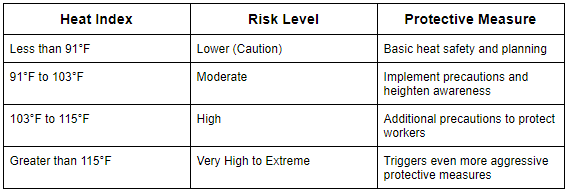 Inside Towers presents an OSHA guide that helps employers understand and use the heat index to protect their workers. The heat index combines temperature and humidity to determine how hot it actually feels, taking into account the body’s ability to cool down through sweating. This guide explains the various heat index risk levels and provides recommendations for implementing a heat illness prevention program.
Inside Towers presents an OSHA guide that helps employers understand and use the heat index to protect their workers. The heat index combines temperature and humidity to determine how hot it actually feels, taking into account the body’s ability to cool down through sweating. This guide explains the various heat index risk levels and provides recommendations for implementing a heat illness prevention program.
Heat Stress Monitoring - OHSA Occupational Health Services Australia
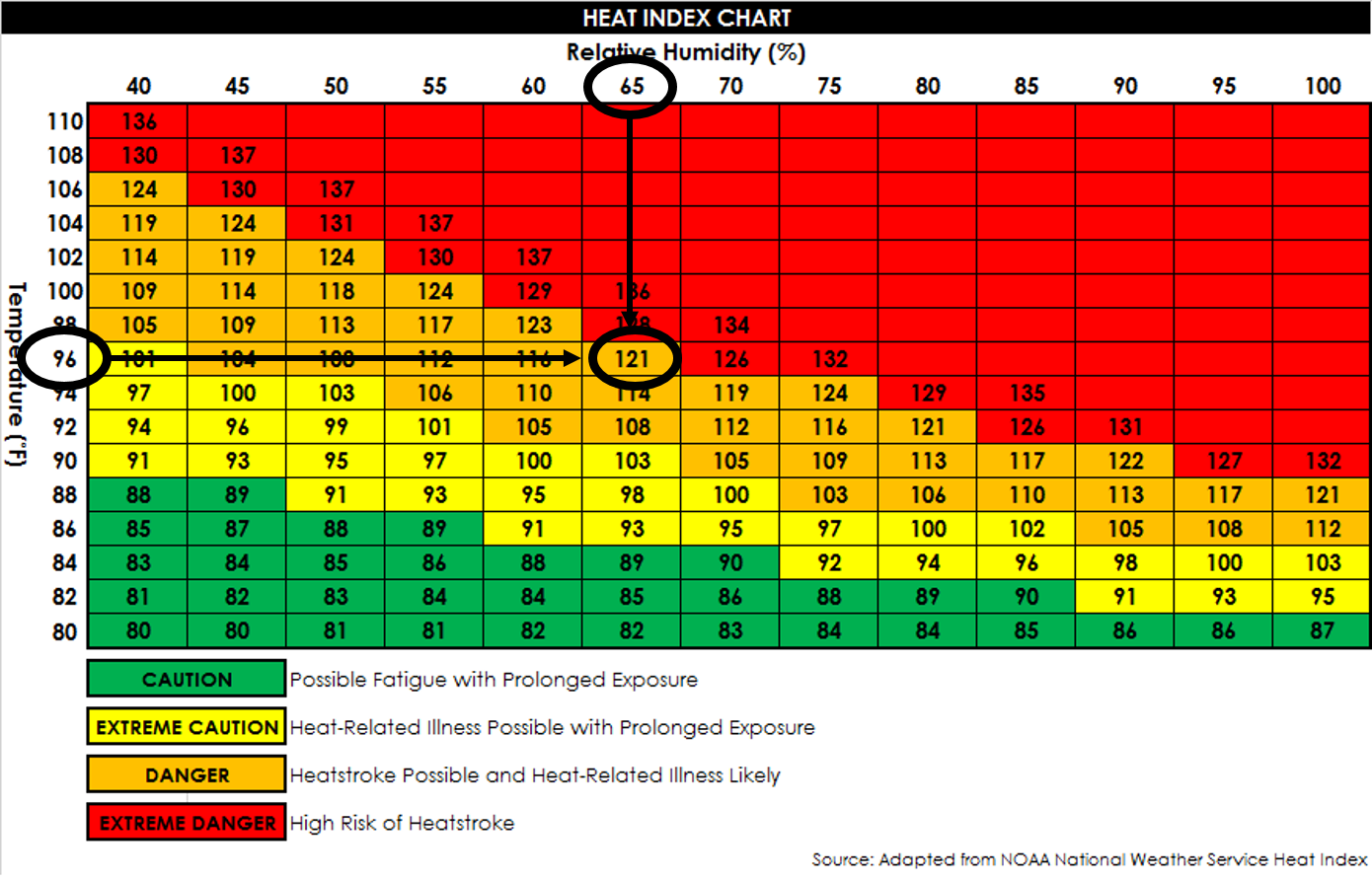 OHSA Occupational Health Services Australia provides a comprehensive heat stress monitoring system to help employers assess and manage the risk of heat-related illnesses in the workplace. Their chart example clearly outlines the different risk levels based on the heat index, along with corresponding recommended work practices and breaks for different levels of risk.
OHSA Occupational Health Services Australia provides a comprehensive heat stress monitoring system to help employers assess and manage the risk of heat-related illnesses in the workplace. Their chart example clearly outlines the different risk levels based on the heat index, along with corresponding recommended work practices and breaks for different levels of risk.
Heat-Related Emergencies
 Heat-related emergencies can occur if proper precautions are not taken. The image provided by Doom and Bloom highlights the symptoms and treatment for heat exhaustion and heat stroke. It’s essential to recognize the signs, such as heavy sweating, dizziness, and confusion, and take immediate action to cool down and seek medical attention if necessary.
Heat-related emergencies can occur if proper precautions are not taken. The image provided by Doom and Bloom highlights the symptoms and treatment for heat exhaustion and heat stroke. It’s essential to recognize the signs, such as heavy sweating, dizziness, and confusion, and take immediate action to cool down and seek medical attention if necessary.
Heat Index: Osha Heat Index Chart
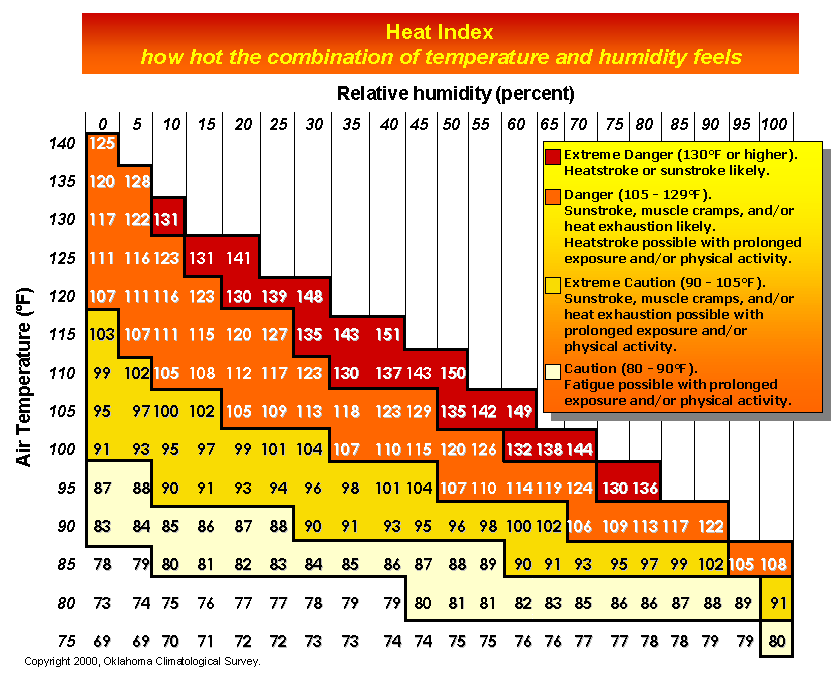 The Oklahoma First Responder Authority offers an OSHA heat index chart that helps workers and employers determine the risk level based on temperature and humidity. The chart suggests appropriate precautions for each level, such as increasing rest breaks, providing additional water, and monitoring workers more closely to detect early signs of heat-related issues.
The Oklahoma First Responder Authority offers an OSHA heat index chart that helps workers and employers determine the risk level based on temperature and humidity. The chart suggests appropriate precautions for each level, such as increasing rest breaks, providing additional water, and monitoring workers more closely to detect early signs of heat-related issues.
Heat Index: National Weather Service Heat Index Chart
 The National Weather Service provides a heat index chart that helps individuals understand the current heat index and the corresponding risk levels. This chart is especially useful for outdoor activities and events and serves as a reminder to take appropriate precautions to prevent heat-related illnesses.
The National Weather Service provides a heat index chart that helps individuals understand the current heat index and the corresponding risk levels. This chart is especially useful for outdoor activities and events and serves as a reminder to take appropriate precautions to prevent heat-related illnesses.
Heat index chart
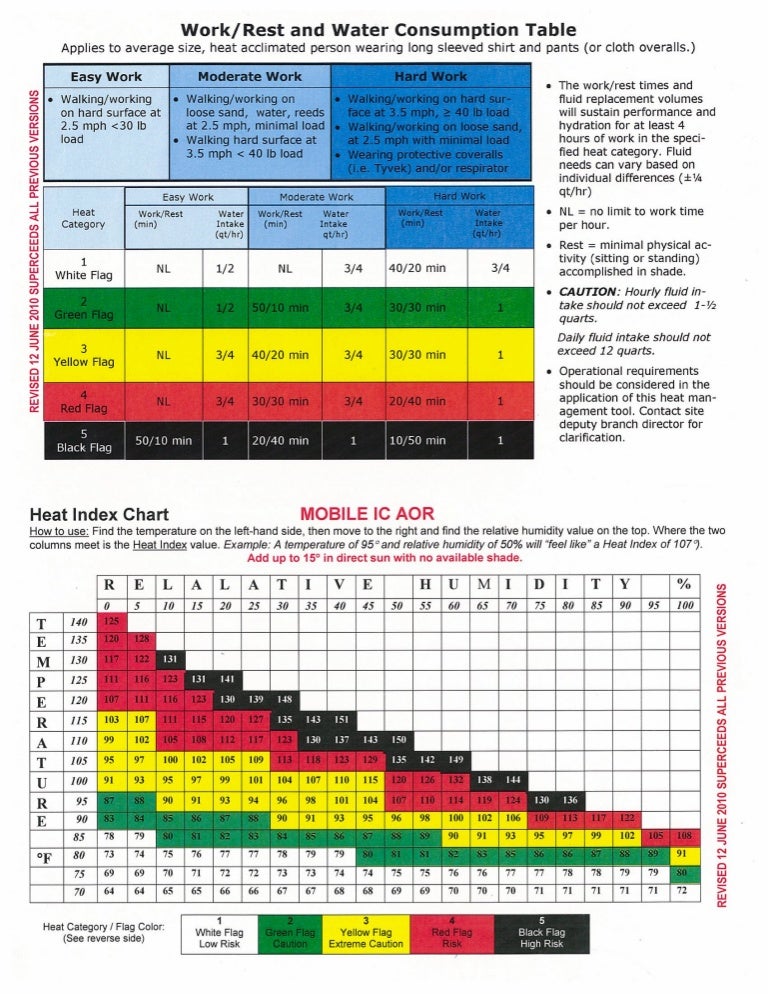 This comprehensive heat index chart, shared on SlideShare, displays the risk levels based on temperature and humidity ranges. It provides guidelines for employees and employers to prevent heat stress and ensure a safe working environment during hot weather conditions.
This comprehensive heat index chart, shared on SlideShare, displays the risk levels based on temperature and humidity ranges. It provides guidelines for employees and employers to prevent heat stress and ensure a safe working environment during hot weather conditions.
Promoting Heat Safety in Construction - Perlo Construction
 Perlo Construction emphasizes the importance of promoting heat safety in the construction industry. Their blog post explains how the combination of physical work and heat can lead to dangerous situations if proper precautions are not taken. They provide valuable guidance on recognizing and preventing heat-related illnesses, including the importance of staying hydrated, taking regular breaks, and wearing proper attire.
Perlo Construction emphasizes the importance of promoting heat safety in the construction industry. Their blog post explains how the combination of physical work and heat can lead to dangerous situations if proper precautions are not taken. They provide valuable guidance on recognizing and preventing heat-related illnesses, including the importance of staying hydrated, taking regular breaks, and wearing proper attire.
Understanding Humidity and Heat Index - OTA Survival School
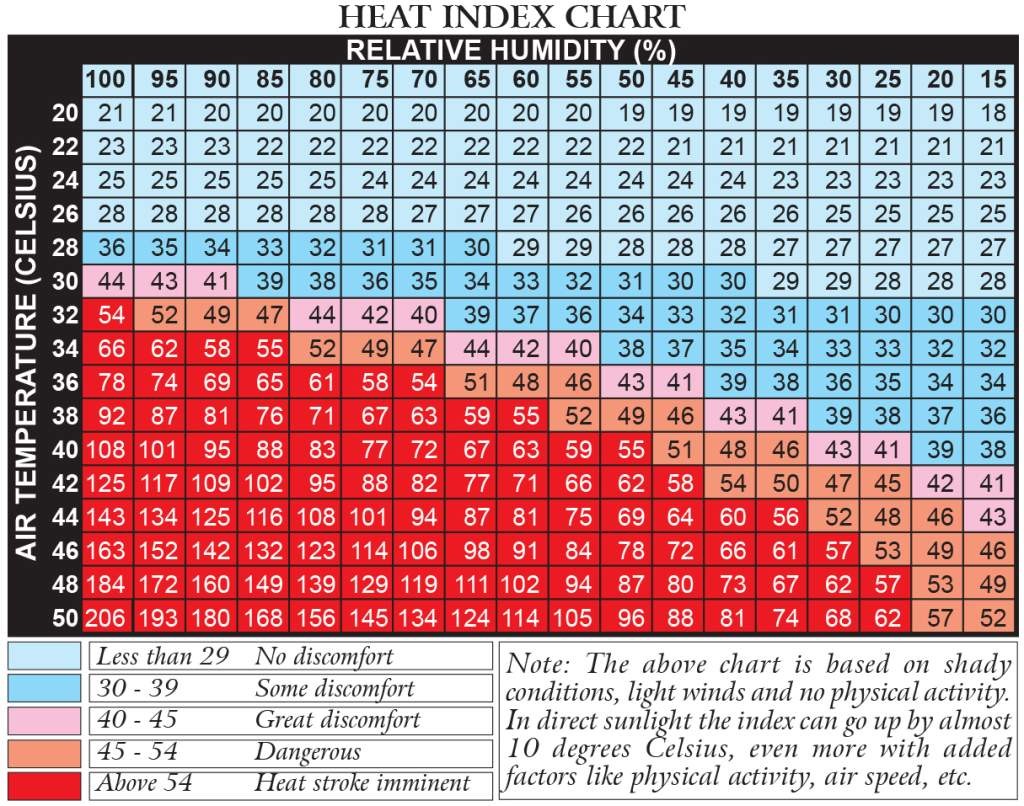 The OTA Survival School dives deeper into understanding the connection between humidity and the heat index. This resource explains how humidity affects the body’s ability to cool down through sweat evaporation and how the heat index accounts for this effect. It also provides tips on adapting to high humidity environments and protecting oneself from heat-related illnesses.
The OTA Survival School dives deeper into understanding the connection between humidity and the heat index. This resource explains how humidity affects the body’s ability to cool down through sweat evaporation and how the heat index accounts for this effect. It also provides tips on adapting to high humidity environments and protecting oneself from heat-related illnesses.
Pin on My Health (and yours!)
 This image, shared on Pinterest, serves as a reminder to prioritize health and take necessary precautions to prevent heat-related illnesses. It encourages individuals to recognize the signs of heat exhaustion and heat stroke and offers tips for staying cool and hydrated.
This image, shared on Pinterest, serves as a reminder to prioritize health and take necessary precautions to prevent heat-related illnesses. It encourages individuals to recognize the signs of heat exhaustion and heat stroke and offers tips for staying cool and hydrated.
As the temperatures continue to rise, it’s crucial to stay informed about the heat index and understand the risks associated with hot and humid weather. Remember to stay hydrated, take regular breaks in shaded areas, and wear lightweight and loose-fitting clothing. By following these precautions and utilizing the resources provided, you can protect yourself and others from heat-related illnesses and enjoy a safe and enjoyable summer.